Here’s why I’m taking Dr Bronner’s soap camping every time I go
Here’s why campers are using this planet-friendly soap for toothpaste, bathing, washing dishes, repelling insects and more on the trails
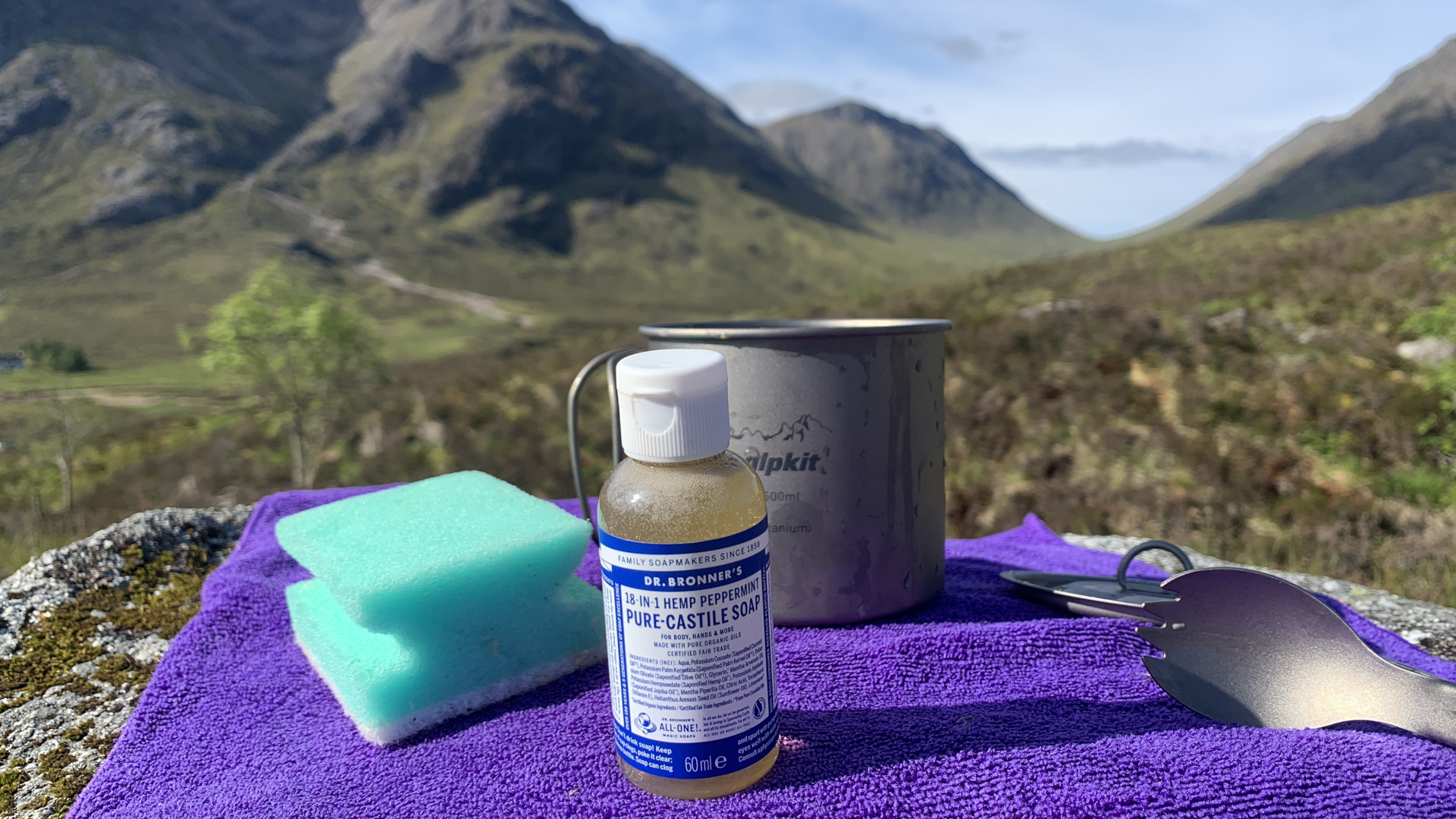
Earlier this summer, I was packing for a five day hike on the West Highland Way. I was wild camping the entire way, and carrying all my food on my back, so needless to say I was looking to cut down on weight in my backpack wherever I could, and I was already down to the absolute bare minimum – no changes of clothing, no down jacket, using my stuff sack filled with my dirty clothes as a camping pillow, you get the picture.
Anyway, a few days before I was due to leave, an email caught my eye listing different uses for Dr Bronner’s soap when you’re out in nature. For at least the last decade, a large bottle of Dr Bronner’s organic oil-based, certified fair trade and biodegradable soap has been a permanent fixture in my shower. I love the way this soap feels and that it’s free of harsh chemicals and friendly to the planet. To be clear, I’d absolutely no intention of bathing on my hike, preferring to pong until I got home, but my curiosity was piqued to see that I could apparently use it for several purposes on the trail, including toothpaste.
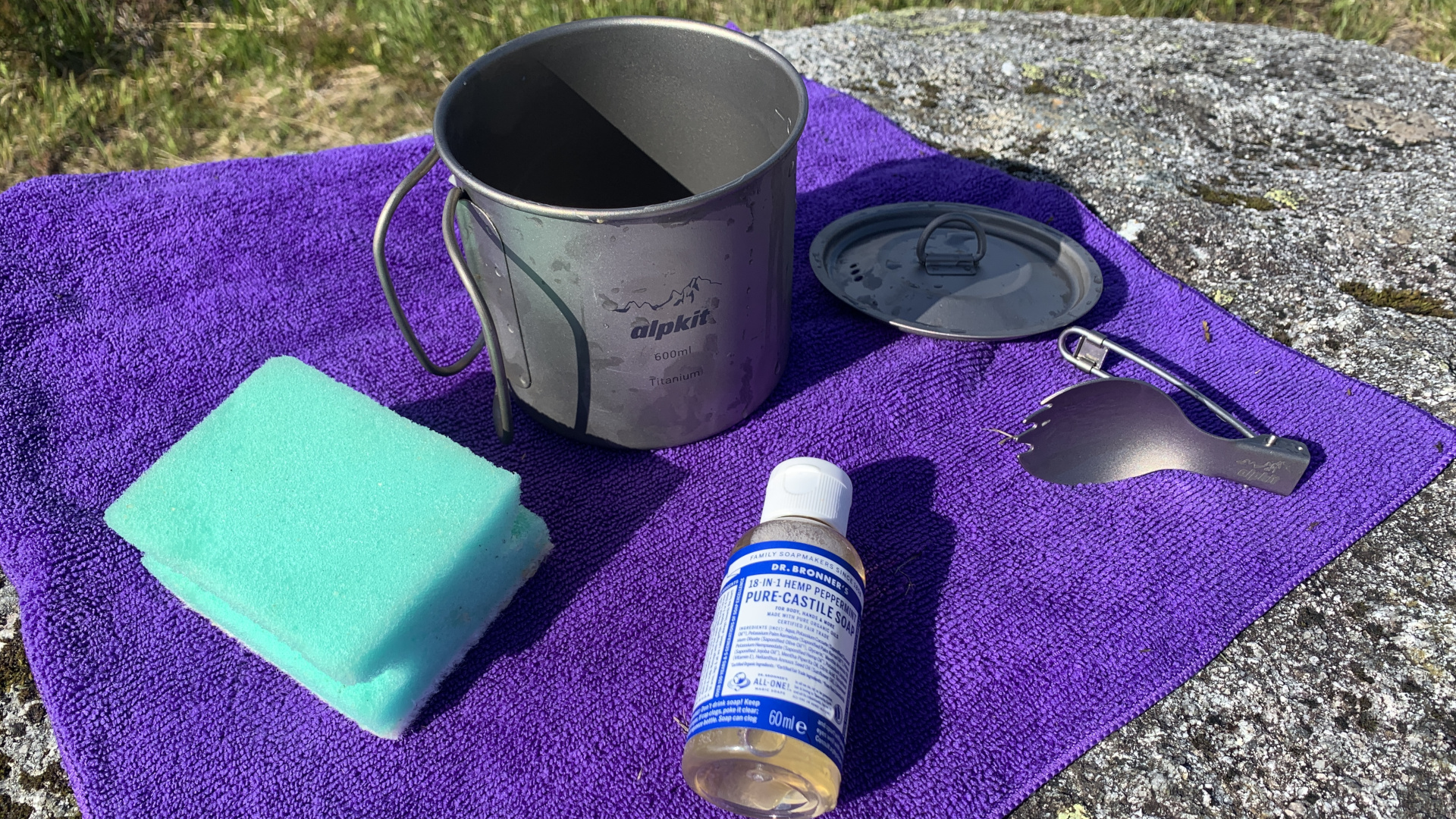
Why not? I thought. I'm a big proponent of eco-friendly camping and want to advocate for eco-friendly outdoor brands, so I got myself a two-ounce bottle of peppermint soap, and replaced my travel-sized toothpaste and my small bottle of dish soap with it. After using it for everything hygiene-related for five days, I can honestly say that I’m taking Dr Bronner’s soap camping and backpacking every time I go from now on. It might not have cut out much weight or room in my pack, but every ounce counts on a long trip, it serves a multitude of purposes and it’s kind on the environment because it’s entirely oil and plant-based (potassium hydroxide is used in production, but none remains post-production) which means it degrades and doesn’t hang around causing harm to plants and wildlife. That said, you should never use this – or any – soap in or near water sources like rivers and lakes.
This soap has about 20 different uses outside of the shower, according to the company’s website, but here some amazing ways to use it while camping.
1. Toothpaste
Let’s start with the one that kicked this whole experiment off. Soap? For toothpaste? Really? I was definitely intrigued by this claim and I do insist on oral hygiene even in the wild but I don’t love spitting toothpaste out in nature, nor do I want to swallow it or carry around a bag of spit (which is, actually, the most environmentally-friendly option, according to Leave No Trace). Dr Bronner’s is largely made using coconut oil, which has long been used for oral hygiene around the world and was found to have a beneficial effect on oral hygiene in a 2020 review.
I’ve been oil pulling with coconut oil regularly for years so I felt quite comfortable with the idea and decided to brave it and forgo the toothpaste altogether for this trip. My very first night, after setting up my tent in Glencoe, I put a single drop on my toothbrush (Bronner’s is very concentrated) and took the plunge, brushing my teeth and then using the spray method to spread the soap out over as big an area of land as possible to reduce the impact on any one spot.
Because I went with peppermint, it was mildly like actual toothpaste, and definitely not as soapy as you might think, but it does have a slightly unpleasant taste that lingers for a minute or two afterwards. It’s nothing that I couldn’t cope with, and my teeth did feel nice and clean afterwards, so I’ll call it a win even though I’ve resorted to toothpaste now I’m home, and will definitely use it on my next backpacking trip.
All the latest inspiration, tips and guides to help you plan your next Advnture!
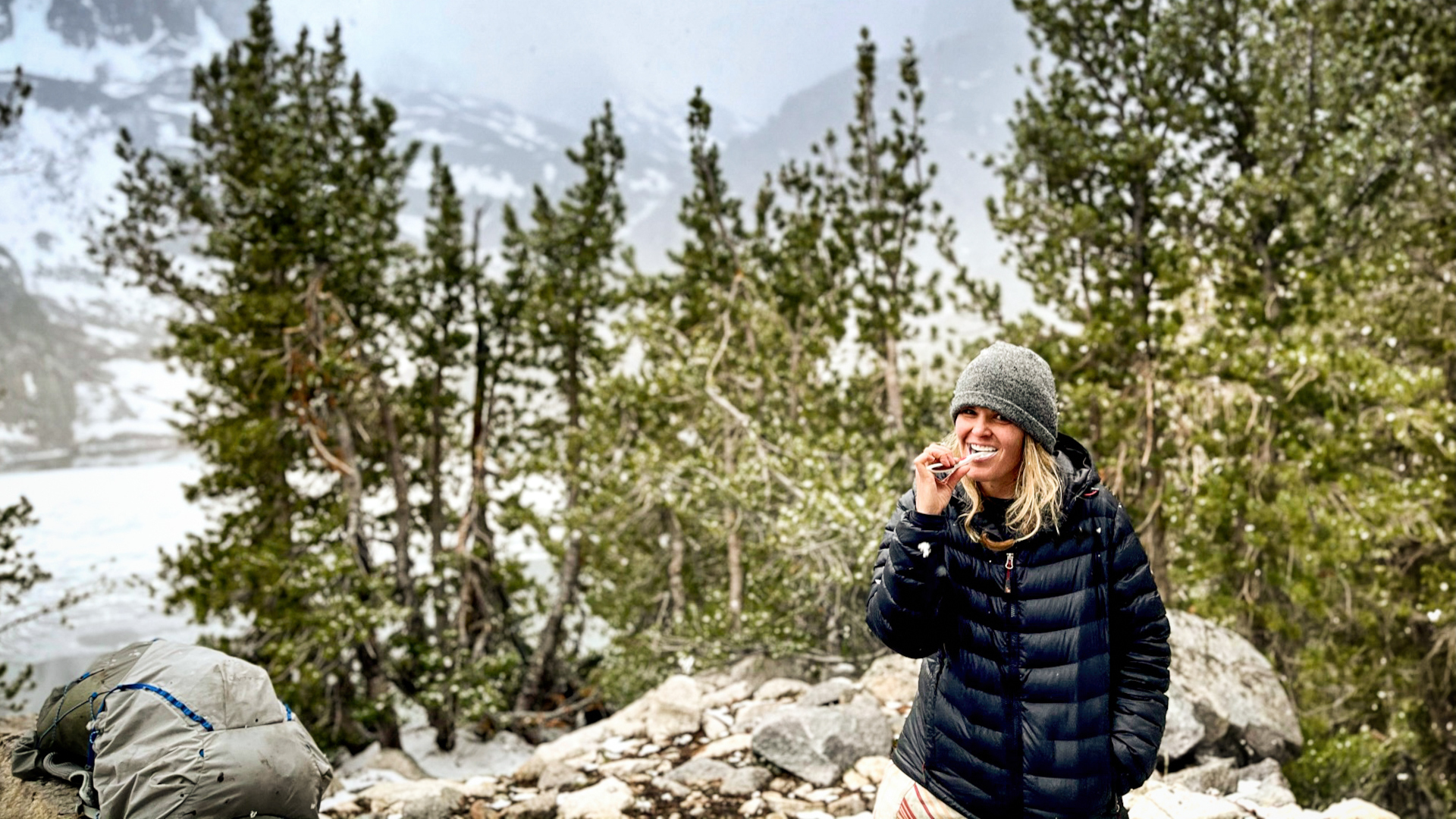
2. Washing dishes
Next up, I had ended my first day by cooking up some macaroni cheese over my camping stove, which was much needed after a 23-mile day, but it also meant my camping pot needed a good scrub. After I ate, I filled it with water and heated it up then let it soak for a bit. When I was ready to clean it, I just added a couple of drops of Bronner’s and gave it a quick wipe with my sponge and it was all sparkly and clean. It worked a charm the next morning following my oatmeal too, which is notorious for sticking to pots! Because I wasn’t using a chemical-based dish soap, I wasn’t worried about rinsing it really thoroughly too, which can be awkward when you’re camping.
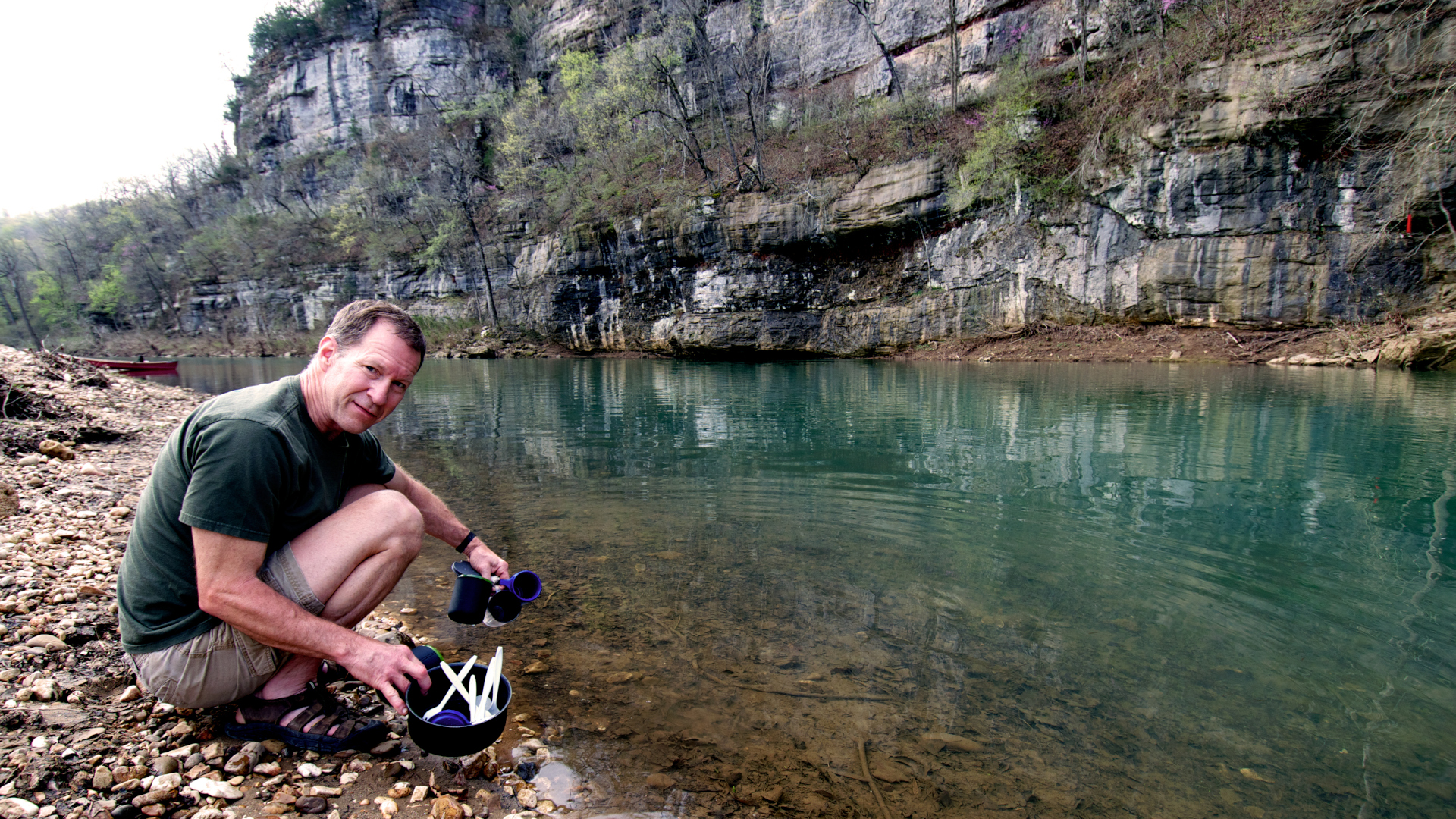
3. Bathing
This one could probably go without saying, but of course you can use Dr Bronner’s for taking a camping shower too. As I’ve already mentioned, I don’t mind getting dirty in the woods but I do usually bring wet wipes for when things get out of hand and carry the dirty ones home with me, which isn’t ideal for a longer backpacking trip or the environment, so I was interested to try using Bronner’s instead.
I was pleased to have it the few times I stopped off to use the handy toilets dotted along the Way where there usually wasn’t any soap, and I was able to scrub my hands, face and armpits. Because it’s so concentrated, just a drop or two will go a long way. Basically, if you’re going camping or backpacking and you think you’ll want to wash your face, hands or body at any point, bring this and use it at least 200ft from any water sources.

4. DIY ant spray
Once I got back from my trip, I saw that Dr Bronner’s can also be used to make up ant spray solution, which I definitely wished I’d had one unfortunate day on the trail, but no way would I have carried the extra weight. Anyway, again I was intrigued so I followed the directions and mixed up a quarter cup with water and took it out to my mum’s garden where I was promised lots of tiny troopers. I didn’t ambush or try to kill the little fellows, because I’m not a monster – I just sprayed it near them to see if it would ward them off and it does seem to work! I’m actually not sure which ingredient repels them, but it’s apparently popular for keeping insects away from plants and people and from now on, when I’m car camping, I’ll definitely bring my spray bottle.
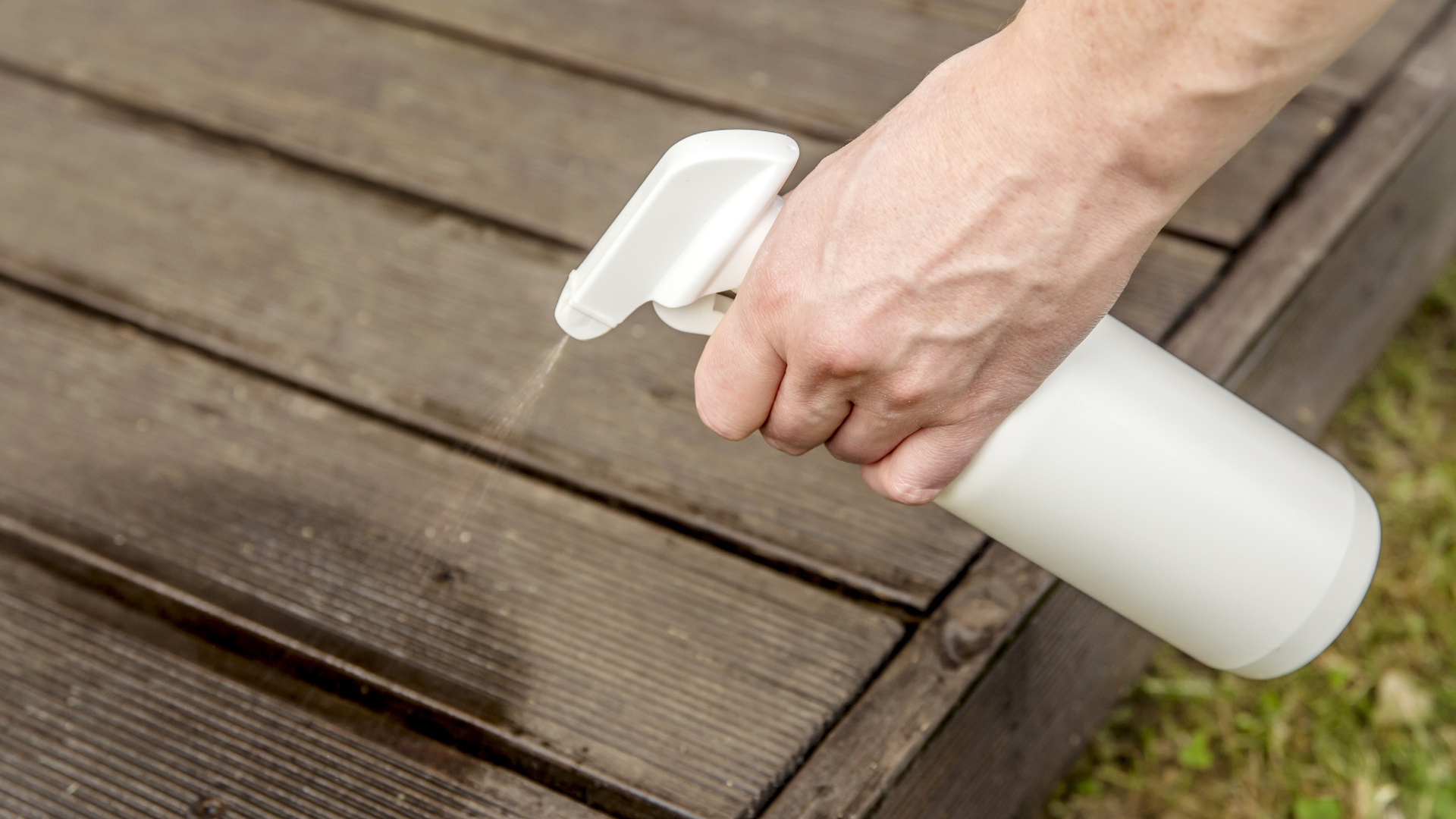
5. Shaving
I did not shave my legs, or any other body part, on my hike (life is too short for that) but I have tested it out back home for those of you that either like to keep things tidy on the trail, or are on a thru-hike and want the occasional grooming session on your rest days. Dr Bronner’s works great for shaving – just wet the area with water then lather up the soap on your skin using these recommended amounts:
- Face: 10 drops
- Underarms: 3 drops
- Legs: 1/2 teaspoon
When you’re camping, you can use a travel-sized microfiber towel to wipe off the excess soap and again, because it’s oil-based, it’s no big deal if you miss a little.
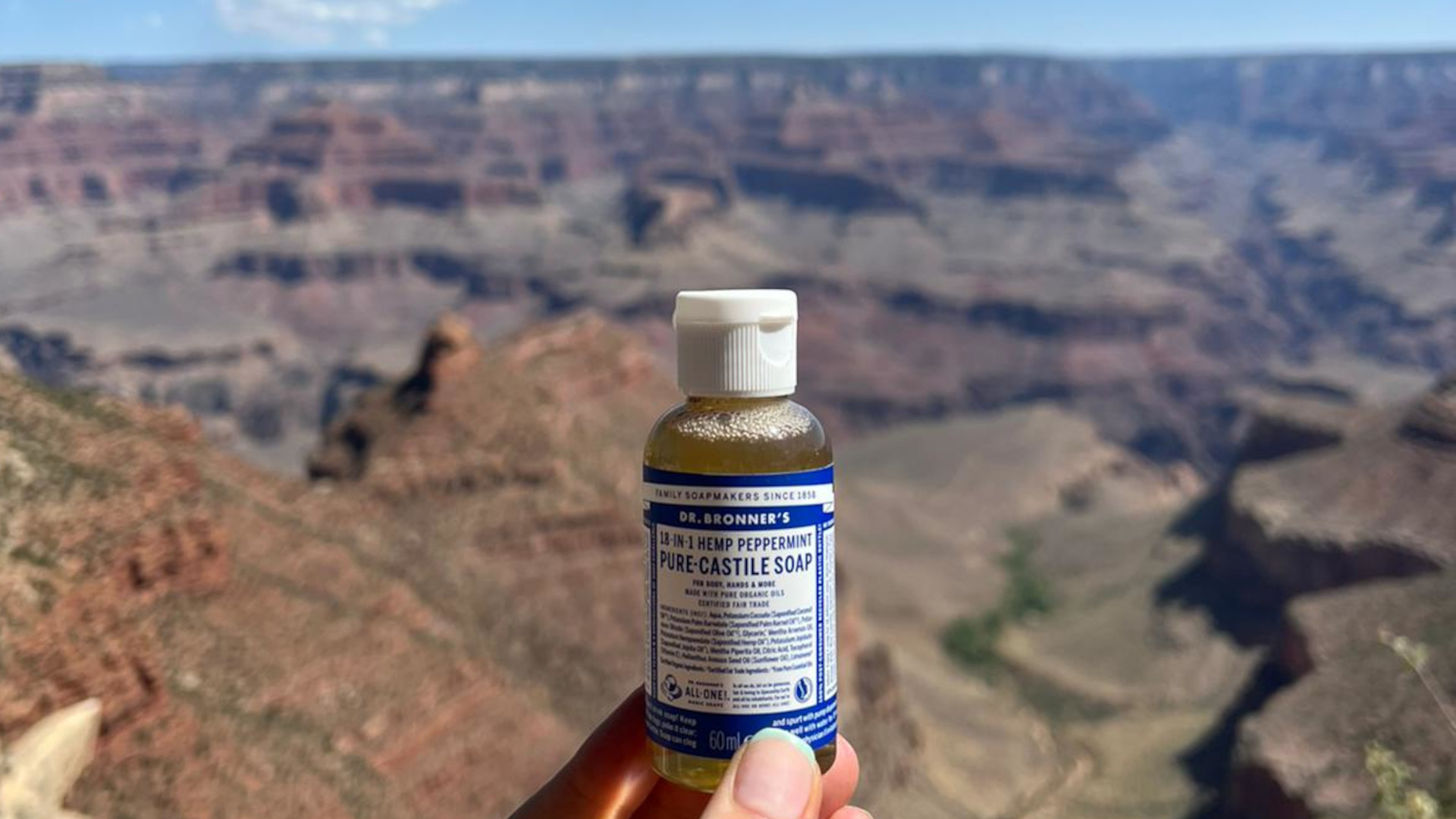
Final thoughts on using Dr Bronner’s camping
In addition to my repeated cautions about not using Dr Bronner’s near rivers, streams and the ocean, I have two other warnings. First, if you’re camping in bear country, make sure you get the non-scented soap or are fastidious about packing it away in a bear canister or bear bag to avoid any unwanted bear encounters.
Second, because it’s coconut oil-based, Dr Bronner’s will solidify in colder temperatures. I haven’t yet had to contend with this, but for winter camping you can just warm it up under your armpit or dip it in warm water in your camping pot before you wash your dishes. Other than that, I think you’ll love your Dr Bronner’s as much as me – enjoy your newfound, convenient cleanliness at camp!
Julia Clarke is a staff writer for Advnture.com and the author of the book Restorative Yoga for Beginners. She loves to explore mountains on foot, bike, skis and belay and then recover on the the yoga mat. Julia graduated with a degree in journalism in 2004 and spent eight years working as a radio presenter in Kansas City, Vermont, Boston and New York City before discovering the joys of the Rocky Mountains. She then detoured west to Colorado and enjoyed 11 years teaching yoga in Vail before returning to her hometown of Glasgow, Scotland in 2020 to focus on family and writing.

